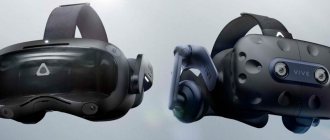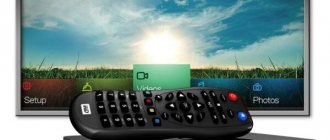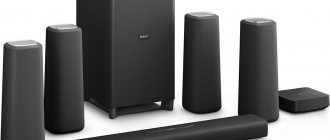If you go back to 1990 and start reading about virtual reality, you'll quickly realize that the term is being used everywhere from the movie The Lawnmower Man to 3D computer models. Nowadays everything has become simpler. Most often, “virtual reality” is associated with bulky gadgets on the forehead like the Oculus Rift. Unfortunately, this comparison makes us think that all devices do the same thing—both the $30 Google Cardboard and the $800 HTC Vive.
But as more VR headsets begin to hit store shelves, the differences between models become starker. Much. And if you are going to buy yourself such a thing, what should you pay attention to? There is no one perfect gadget that will suit everyone. Moreover, it is too early to recommend anything when many devices have not even been released yet. But we can give you some tips that will help you answer the main questions for yourself: what are the capabilities of different types of virtual reality, how much can you pay for a headset, and what functions do you need?
First of all, you need to decide what you expect from a virtual reality headset:
- I just want to try, the simplest possibilities will be enough.
- I want to experience all the possibilities of virtual reality.
- I want something in between.
We conditionally divided all devices into three classes: “cheap”, “mid-price” and “professional”. Each class is divided into six criteria that will help you compare gadgets with each other. So, let's go.
Design
The simplest form of headset is a cardboard box with a pair of lenses, using a smartphone as a screen. Many will immediately remember Google Cardboard, but the idea itself arose much earlier. Google just started selling its kits, and the company spends most of its efforts on unifying its product so that third-party manufacturers can receive the coveted “Google Cardboard Compatible” certificate. Not all developers follow the template, but the most popular VR headsets guarantee compatibility and therefore support for certified applications on Android and iOS.
Google Cardboard compatible headsets are easy to find. Most are made of cardboard, some are made of plastic or even aluminum. However, their capabilities are very limited; many are generally only suitable for viewing 360-degree video. In addition, they are not designed for long-term use: Google standards prohibit the installation of head straps. Cardboard boxes are quite uncomfortable, and even more ergonomic plastic models like the Mattel View-Master are only comfortable to hold for the first five minutes.
Maximum price
If you live in a major city or frequent tech shows, you can get Cardboard for free. Many companies are working with Google and third-party manufacturers to create their own headsets. For example, Verizon recently gave away Star Wars Cardboard to its subscribers. You can buy a piece of cardboard, plastic lenses, print a headset template from the official Google website and make a device. Lazy people can order Cardboard from the USA for $15. In addition, the Google website has additional options from Dodocase and Knox Labs. New design elements and improved materials will slightly increase the cost of the headset, but no more than $5-15.
Additional expenses
Almost two-thirds of Russian adults use smartphones, but that's all Google Cardboard needs. And you don’t have to buy more expensive and sophisticated phones. Cardboard will also work for iPhone users, despite Google's slow update of its iOS apps. Apple has so far ignored virtual reality, so it's hard to say when the company will create its own device. But even if your smartphone is not that old, there is no guarantee that it will support Google Cardboard applications. And if it does, it will be with reduced graphics and poor performance.
Dimensions
Not all Google Cardboard style headsets are portable or compact. But Google Cardboard has advantages. The basic model folds into a small box, and the smallest is slightly larger than glasses. Cardboard is primarily intended for video viewing where there is no need to track head movement, so the lack of sensors will have little impact on functionality. On the other hand, the smaller the headset, the less convenient it is to use. To immerse yourself in virtual reality, you need to isolate yourself from the world, which is why all headsets fit so tightly to your face. If the device is in the form of glasses, then there will be no complete immersion. By the way, with Google Cardboard it is advisable to sit on a swivel chair.
Control
To be considered fully Cardboard compatible, a headset must have only one input device. Not necessarily a key. It could simply be a hole for your finger to press on the display. If the device has keys, they are usually small levers that press the display for you. What can you do with one button? Selecting menu items or performing simple and rather slow actions in games. Some headsets do without buttons at all: just tilt your head towards the desired menu section and hold for a couple of seconds. Or turn your head to change the direction of movement in the game.
Availability
The simplest VR headsets are cheap and popular. About a dozen Google Cardboard-style devices are already available on the official website, and several more - such as an improved version of the View-Master - are already on their way to store shelves. True, cardboard sets quickly become unusable, but replacing them is not difficult.
In addition, it is easy to find a lot of applications for Cardboard, even if their capabilities are limited. Vrse, Jaunt Ryot, IM360 and other programs for viewing VR videos, as well as applications worth paying attention to are Cardboard Crash and Proton Pulse. In YouTube on Android, Google has made a separate library of videos that you can watch using Cardboard. 360-degree videos are played entirely in virtual reality, and when playing regular ones, a cinematic effect is created.
Smarterra VR Sound MAX
- purpose: for smartphones 4.7 – 6″
- interpupillary distance adjustment: 60 to 70 mm
- viewing angle: 100°
- headphones: built-in
- 3.5mm jack: no
If your budget is limited to 2 thousand rubles, and you want to choose a VR headset with headphones and the ability to adjust lenses, then pay attention to the model from Smarterra.
According to user reviews, the picture in it is clear, the eyes do not get tired, and the sound in the headphones is quite clear. Should we expect more from an inexpensive gadget?
Advantages and disadvantages
stylish
not heavy
clear picture
smell of plastic
flimsy
Design
Mid-priced headsets come with more features than Google Cardboard. If Cardboards are just funny boxes for smartphones, then cooler headsets can have motion sensors, additional controls, a focus wheel, and even a built-in display. The most famous headset in this class is the Gear VR from Samsung. But there are also less popular devices, for example, Zeiss VR One or French Homido. LG demonstrated its gadget at MWC 2016. And Google, if rumors are to be believed, will also make an announcement in the coming months.
Russian entrepreneurs have also decided to enter the VR device market. In 2014, domestic virtual reality glasses Fibrum Pro were presented for the first time. The headset does not have its own display or sensors. They are replaced by a smartphone running iOS or Android with a diagonal of 4 to 6.5 inches.
Unlike the cheapest and most expensive devices, the range in quality and functions among mid-price headsets is very large. At the moment, Samsung Gear VR is in the lead. The LG 360 VR has a mediocre design and weak specifications. The appearance of Homido, Zeiss and Fibrum is generally similar to Cardboard.
Maximum price
If you're looking for a durable headset with a strap, expect to shell out $75-$125. For example, the Russian Fibrum Pro headset costs about 7,000 rubles. The company is already ambitiously announcing that in the future it will begin producing glasses with its own screen and sensors. But there is no information yet about the cost of such a model. When you buy the Gear VR, you're paying for software optimizations, better controls than Google Cardboard, a separate app store, and attention to detail. But the Gear VR is also priced higher than the Homido or VR One, which are more like a Cardboard with high-quality lenses (Zeiss) or a focus ring (Homido). The cost of the LG 360 VR is still unknown, as is the price of the Google headset. However, you can get Gear VR for free: Samsung often gives a headset when purchasing or pre-ordering smartphones.
Additional expenses
If you are planning to sell your old smartphone, consider continuing to purchase a headset. Gear VR and 360 VR only work with the latest flagships from Samsung and LG, respectively. When Google introduces its development (not Cardboard), the latest Nexus smartphones may also be required. And other headsets, although they support iPhone, do not have special functions. And it’s unclear when Apple will create its own device.
Dimensions
Mid-price headsets found themselves in an incomprehensible niche. In a sense, they have the best of both worlds: compact, portable, but at the same time more convenient than Google Cardboard. Devices like the Gear VR or Fibrum Pro don't have tangled wires. But virtual reality, too interactive and fast for Cardboard, can cause nausea and dizziness here. Position sensors, which measure not only the rotation of the head, but also the movement of a person in space, slightly mitigate the negative consequences. However, at the moment, virtual reality systems require an external camera to track movement, which means tethered to wires.
In the future, mobile headsets will be able to use a smartphone's camera to create a virtual map of space (called "inside-out tracking"), but there's nothing like it on the market yet. Maybe Google will take on this?
Control
Mid-price headsets have several controls. But some, for example, Homido or Zeiss VR One, do without them altogether. In LG 360 VR, only 2 buttons are responsible for controlling virtual reality; with Fibrum Pro, a gamepad is used. Gear VR has the most convenient control system - a touch panel on the side, similar to a laptop trackpad. It doesn’t work perfectly, but it replaces several functions at once: swipe, scroll, tap, hold, “Back” action.
Availability
Gear VR is the first headset to hit store shelves en masse and is still on sale. So finding it is not a problem. Headsets that are suitable for all smartphones, not just Samsung, can also be found in large online stores. But it's better to wait. The start date for sales of the LG 360 VR is still unknown, and a device from Google is looming on the horizon. Fibrum Pro can be easily found and ordered in the Madrobots.ru catalog.
The best option at the moment remains Gear VR. This headset has hundreds of games, applications and several experimental programs that use an unusual control system. While apps like Jaunt or VRSE work on both Google Cardboard and Gear VR, only Samung Milk offers unusual video options. For example, the series Gone from the creators of The Walking Dead, where the viewer is immersed in virtual reality. There are many games in development that are tailored for Gear VR. Considering that the giants Samsung and Oculus are responsible for them, we will see something cool. And although they cost more than regular games - from $5 to $10 - they can be purchased at a discount on sales.
What types of such devices are there and what is the difference between glasses and a helmet?
There are two types of such gadgets for virtual reality:
- glasses that use a smartphone as a screen;
- full-fledged helmets with a screen, sensors and controls.
The basic operating principle is the same for both glasses and helmets. The device body contains two lenses. Behind the lenses there is a screen (built-in or external), which is programmatically or physically divided into two parts. The image displayed on the left and right half of the screen is almost the same. A 3D image is achieved by each eye seeing the image separately. One eye does not allow you to perceive the full depth of the image and correctly calculate the distance.
To give the user the opportunity to be in virtual space, the virtual reality helmet is equipped with a special sensor - a gyroscope. The gyroscope's job is to track the rotation of a person's head.
Design
High-quality virtual reality cannot be transmitted through a mobile phone screen. The Oculus Rift, HTC and Valve's Vive, and Sony's PlayStation VR are three professional headsets we're looking forward to, all running on external computers or gaming consoles. They are equipped with motion tracking sensors, high-resolution displays and provide maximum graphics quality. These headsets are more comfortable, better isolate your eyes from external light sources, and are less prone to motion sickness. But they will not come out soon, and their price will be considerable.
Maximum price
Oculus Rift will cost $599, but the price of additional motion controllers is still unknown. HTC Vive costs $799. The only headset we don't know anything about yet is the Playstation VR. Preliminary cost estimates for the Rift and Vive turned out to be far from reality - buyers underestimated the first device and overestimated the second - so we will refrain from making predictions. But we know for sure that the system will cost several hundred dollars and will not be limited to just a headset: the kit includes a unit that helps the Sony Playstation 4 process video. All prices will gradually decrease, but it is difficult to say how long this will take.
Additional expenses
Most people have a desktop computer or laptop. But only the computers of video editors, e-sports athletes and other people who have to work with enormous computing power can handle virtual reality processing. Of course, your computer will be enough to play some VR videos or run simple games. However, for the ultimate experience, expect to spend $1,000 on a new PC. With PlayStation VR everything is a little simpler - you only need a PlayStation 4.
Dimensions
The main advantage of professional headsets is the ability to move and even walk in any direction. Oculus and Sony use a relatively simple method: diodes or other markers are installed in the helmet, and an external camera tracks their movement. This method is quite effective, but is limited by the camera’s coverage width. PlayStation VR allows you to crouch, bend, and move in circles. Rift allows you to walk a few meters in any direction, but to do this you need to install several cameras.
HTC Vive uses a laser tracking system that allows you to move as you please within a 15x15 meter room. The headset provides the greatest freedom of movement compared to competitors. The tracking system prevents you from crashing into a wall: as soon as you approach the border of the zone, the camera will turn on and show your position. But at the same time, you will have to find a free place to put a powerful computer. Yes, Vive can be used in small enclosed spaces, such as an apartment. But the less space, the less sense there is in such an expensive toy.
Control
The main purpose of professional VR systems is video games, so gamepads are mainly used to control Oculus Rift and PlayStation VR. The Rift comes with an Xbox One controller, which you'll need during the initial stages of launching the system. PSVR only uses the PS4 controller for some functions. But the main feature of the headsets is motion sensors, which allow you to do almost everything, from playing virtual ping-pong to 3D coloring.
Sony already has Move motion-tracking joysticks, and the PlayStation 4 gamepad has light strips that are detected by the camera. Rift and Vive use proprietary controllers, and it’s difficult to give preference to someone: it all depends on personal feelings. Besides, both have the same capabilities. But there are also general disadvantages: controllers for the Rift have not yet been released, and the Vive only works with branded joysticks from HTC and Valve.
Availability
April could be a big month for professional VR headsets. The Oculus Rift will begin shipping at the end of March, followed by the HTC Vive shortly thereafter. Although many will receive their orders closer to summer. Demand for the Oculus Rift is high, so the next delivery is scheduled only for July. But if you buy a headset bundled with a computer, there is a chance to snatch the system early. Pre-orders for the Vive have just opened, so we can’t yet judge the number of potential buyers. The Rift (and possibly the Vive) will be available in stores, but in small quantities.
If you decide to buy a PlayStation VR, you will have to be patient. Most likely, Sony will begin shipping headsets this fall. We can find out the exact date during the annual Game Developers Conference (March 14-18), where a year ago the company announced the device itself. Sony has already presented 17 games for the console, little is known about other developments. The remaining manufacturers will add several free games to the headsets: the Rift will come with the platformer Lucky's Tale (for everyone) and EVE: Valkyrie (for those who pre-order). Vive buyers will get Tilt Brush, Fantastic Contraption and Job Simulator.
If you're not planning on buying VR headsets before everyone else, wait a few months. Oculus and Valve are preparing dozens of games for the Rift and Vive, but we won't know the full list anytime soon. In addition, early releases will definitely have a lot of bugs, which will take time to eliminate. On the Oculus Rift, many interesting applications will not work at all without controllers, for example, the sculpting simulator Medium. And they will go on sale much later. And most importantly, after some time the cost of the headsets themselves will decrease.
Source:
The Verge
HOMIDO mini
- purpose: for smartphones 4.5 – 5.5″
- viewing angle: 100°
- Compatibility: Android, iOS
- 3.5mm jack: no
This small device is compatible with small smartphones. It is as easy to use as possible: all you need to do is turn on the VR application, attach the headset to your smartphone, place it on your eyes and enjoy.
In addition to its small size, the HOMIDO mini headset also has a foldable design, so it is the champion in compactness among virtual reality glasses.
Advantages and disadvantages
small
easy to use
Comes with a storage case
Interpupillary distance is not adjustable
not suitable for large smartphones
Chinese All-In-One VR helmets based on Android
It is important not to confuse them with the previous group!
What's the point
In fact, it's just a phone built into VR glasses like the ones I describe at the very beginning. Often a primitive processor is installed there, which is not guaranteed to even handle mobile games. It would be good if the screen was Full HD, but HD models also exist. Inside such a helmet, as a rule, a “Nibiru” shell is installed (this is a customized Android 4.4 or even version 5). This means that the destiny of such helmets is the same as described at the very beginning of the article - installing applications from Google Market, watching movies from a flash drive, and the like.
IMPORTANT! They cannot be connected to a PC like a second monitor, even if there is an HDMI input, because - as practice has shown - this is not an input, but an output. In addition, they do not have software that would force Windu to see them, like a second monitor or helmet. Don't fall for this marketing ploy.
That is, to play PC games on such a helmet, you will still need Trinus VR or RiftCat.
Of the models that I remember, these are Digma VR (review on YouTube), VR Sky, there was something else there, there are a lot of them. Even Bobo VR came out with such an All-In-One model...
Pros of All-In-One VR helmets:
- relatively low price. The same Digmas can already be found on Ali for 4-6k;
- you don’t need a suitable phone, it’s already here;
- your phone is always free;
- autonomy - you don’t need a computer and you can take it with you anywhere;
- All controls are located on the helmet - sound, start-pause, rewind, etc...
Cons of All-In-One VR helmets:
- weak hardware and screen, although if it’s Full HD, then it’s still quite possible to live;
- not suitable for connecting to a PC;
- the same mobile applications instead of full-fledged games;
- lack of positioning and controllers;
- The overall build quality may well be low for the money.
When might an All-In-One helmet come in handy?
If you want VR "cheaply" and you don't have a suitable phone and don't want to change your old one purely because of VR. But, we must remember that these are mobile helmets and cannot be directly connected to a PC. You can also take it for video, or if you plan to take the helmet with you.
On the other hand, if you don’t mind the money, and you need something like just such an autonomous device, it makes sense to take a closer look at the next category of helmets.
Where to read about Chinese All-In-One helmets
It happens that they are discussed in the general topic on VR on 4pda, where you can look for reviews and other information on them in the header.
HTC Vive Cosmos
- purpose: for PC
- resolution overall/per eye: 2880×1700 / 1440×1700
- refresh rate: 90Hz
- interpupillary distance adjustment: yes
- viewing angle: 110°
- motion controller: included
- headphones: built-in
- Sensors: accelerometer, gyroscope, magnetometer
This is a universal virtual reality headset with a screen resolution that is not inferior to the more expensive Valve Index model. The base model has six cameras on the front that track your movement without the use of external sensors. If you prefer a more immersive VR experience, you can purchase an alternative faceplate that's compatible with HTC Vive base stations and trackers.
The field of view of this model is 110 degrees, which is inferior to the Index, but is the standard for most of the best virtual reality glasses.
Cosmos comes with Viveport's own library of over 500 VR titles, and is compatible with Steam VR. While this headset needs to be connected to your PC by default, you can purchase a wireless adapter that allows for a smooth VR experience without the risk of tripping over wires.
Advantages and disadvantages
good sound, built-in microphone
high quality folding display
310 degree tracking area
confusing interface
sometimes resets tracking, for example if you lean over
large and heavy controllers that require two AA batteries (each)











